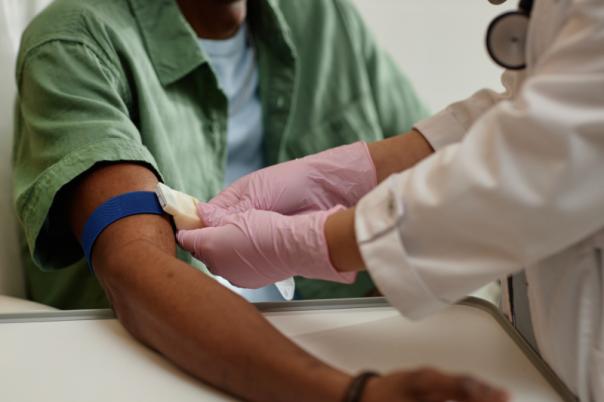Key Takeaways:
- New regulations have made diagnostic approval more complex and demanding.
- Early planning and broad lab compatibility are critical for diagnostic success.
- Clinical adoption depends on clear evidence of real-world benefit and cost-effectiveness.
- Analytical validation is essential before clinical validation can proceed.
- Regulatory approval and payer reimbursement are separate, equally challenging hurdles.
- Modelling and AI in diagnostics now require rigorous documentation and reproducibility.
- Success in translational diagnostics requires both scientific rigor and practical strategy.
From Bench to Bedside: Why Biomarkers Don’t Travel on Science Alone
At a recent interactive panel discussion, a diverse circle of clinicians, modelers, regulators, and entrepreneurs gathered to share experiences from the shifting frontier of translational diagnostics. Everyone in the room believed in biomarkers – some had built entire careers around them – but belief was not the question. The challenge was far more pragmatic: how does a promising scientific signal become a tool that physicians can order and payers are willing to reimburse?
Regulation: The New Reality
The discussion opened with a dose of regulatory realism. One participant from a global diagnostics team summarised the sentiment bluntly: the new European framework for in vitro diagnostics has changed everything. Evidence thresholds are higher. Documentation requirements have multiplied. Timelines now differ dramatically between jurisdictions. For multinational organisations, these changes are a project management puzzle; for smaller innovators, they are existential.
Across the table, a commercial leader underscored the same point from another angle. Too often, companies treat diagnostic development as a secondary task to the therapeutic program – a final checkbox before launch. In reality, success depends on preparation that begins at least a year in advance. That means educating clinicians, readying laboratories, understanding which testing platforms are actually in use, and designing assays that work across diverse technical environments. A single proprietary kit, no matter how elegant, will fail if half the target market lacks the infrastructure to run it.
A Case Study in Pragmatism
The panel turned next to a concrete example: a small enterprise developing a blood-based diagnostic for liver cancer. Built on extracellular vesicle profiling, the assay detects liver-derived signals through proteins and microRNAs. The project recently received accelerated regulatory designation in the United States – an achievement that facilitates dialogue with regulators and payers but does not exempt it from evidentiary rigor.
The diagnostic aims to improve on a current standard of care: ultrasound surveillance in patients with cirrhosis. Existing approaches suffer from limited sensitivity, particularly among individuals with obesity – the very population at highest risk. A simple blood draw, performed during a routine visit, could offer both clinical and logistical advantages. But the company’s leaders were candid about the “messy middle”: shifting regulatory definitions for laboratory-developed tests, funding gaps between pilot studies and pivotal trials, and uncertainty around reimbursement timelines. Their strategy blends pragmatism with persistence – building hospital partnerships to generate outcomes data while keeping regulatory submissions moving forward.
Modelling Enters the Audit Era
Attention then shifted from diagnostics to computational modelling. For years, pharmacokinetic and pharmacodynamic models, as well as virtual trials, played supportive roles – helpful for dose selection or exploratory analyses, but rarely central to regulatory filings. That era is ending.
With the arrival of new international guidance on modelling, AI, and software validation, modelling has entered the realm of formal scrutiny. Reproducibility now matters as much as creativity. Configuration control, version management, and documentation of analytical workflows are becoming essential. As one expert noted, credibility has two halves: the ability to predict outcomes on external data, and the ability to reproduce those predictions under independent review. Only when both are achieved can modelling results graduate from internal strategy decks to regulatory submissions.
The Problem of Misaligned Clocks
Over the course of the discussion, a broader theme emerged – one of asynchronous systems. Different regulatory and reimbursement regimes, each operating on its own timeline, create friction even when scientific evidence is solid. The European regulations, evolving policies in the United Kingdom, and emerging frameworks in markets such as Brazil all progress at different speeds. Clinical development runs on yet another clock. Payer assessment, a fourth.
The result is a constant negotiation between overlapping but unsynchronised processes. In some markets, therapeutic labels may require an authorised companion test, while the test label references the therapy – creating dependencies that look tidy on paper but are chaotic in practice. Health systems, meanwhile, ask hard but reasonable questions: Does the biomarker save appointments? Accelerate diagnosis? Reduce imaging costs? Only clear, quantified answers will earn adoption.
The Academic Dilemma
An academic contributor illustrated the challenge vividly. His team had identified an immune-cell receptor signature potentially predictive of treatment response – a strong biological rationale supported by preliminary data. But translating that finding into a clinically validated test was another story. Funding was limited. Regulatory guidance remained general until specific questions were forced.
The panel’s advice distilled to disciplined simplicity: predefine the signature and decision algorithm; fix the thresholds before seeing the outcomes; complete analytical validation on the intended platform; and design a lean, prospective study within the clinical population where decisions will actually be made. Before investing heavily, schedule an early consultation with regulators and ask narrow, concrete questions. The more specific the inquiry, the more actionable the feedback.
Regulation vs. Reimbursement: Different Games, Different Courts
Threaded through the conversation was a hard economic truth: regulatory approval and payer coverage are separate hurdles governed by different logics. Market authorisation allows commercialisation; reimbursement enables sustainability. Payers look beyond safety and efficacy to clinical utility and budget impact.
Planning must therefore include health economic evidence – cost per correct diagnosis, reduction in unnecessary imaging or biopsy, time to diagnosis, and equity gains for populations with limited access to follow-up care. These data points drive real-world adoption and local coverage decisions more effectively than molecular novelty alone.
The Gatekeeping Power of Analytical Validation
Another recurring theme was the foundational role of analytical validation. Terms like precision, accuracy, limits of detection and quantification, interferences, and stability may sound procedural, but they embody the ethical responsibility not to expose patients to unreliable results. Analytical robustness is the prerequisite for clinical validation, not its afterthought.
In rare diseases or low-prevalence conditions, regulators may allow the use of banked or contrived samples to fill analytical gaps. Yet clinical validity still demands prospective designs that reflect actual decision-making contexts, even when sample sizes are constrained.
A Global Patchwork and a Clarified Standard
While the European regulatory environment has introduced friction, it has also provided clarity about what good practice looks like: post-market surveillance, traceable databases, and transparent categorisation of companion diagnostics. The price, however, is complexity – staggered trials that launch outside Europe while dossiers mature, national requirements that echo but do not perfectly align, and translation challenges that extend from scientific language to literal language.
Craft, Not Just Science
By the end of the discussion, the consensus was both sobering and hopeful. No one claimed to have solved the regulatory labyrinth or perfected the path to payer adoption. But a set of practical principles emerged:
- Begin testing strategies at least a year earlier than instinct suggests.
- Design assays compatible with multiple laboratory environments.
- Stage evidence deliberately – analytical first, clinical next, health economics in parallel.
- Use regulatory consultations strategically and with precision.
- Treat modelling as an auditable component of the evidence chain, not an exploratory extra.
Above all, the group agreed that success in translational diagnostics depends on craftsmanship as much as science. It requires the courage to make early, reversible decisions; to trade short-term speed for long-term acceleration; and to recognise that a biomarker is not merely a molecular signal, but a social construct that must convince clinicians, commissioners, and computers alike.
Science Is Necessary but Not Sufficient
As the final chairs scraped back and conversations spilled into the hallway, one conclusion remained. Science is necessary, but it is not sufficient. The rest – the regulatory foresight, the study design, the documentation, and the art of asking the right question at the right time – constitutes the craft that turns discovery into delivery. Translational medicine, in this light, is not just an experiment in biology but an experiment in persistence.








